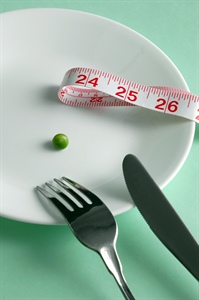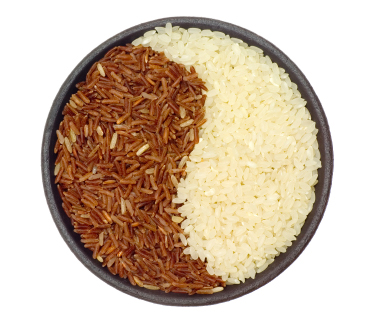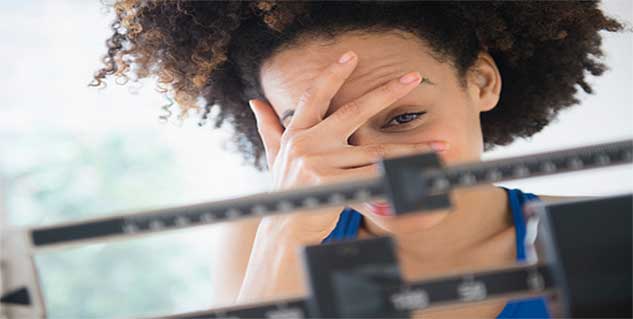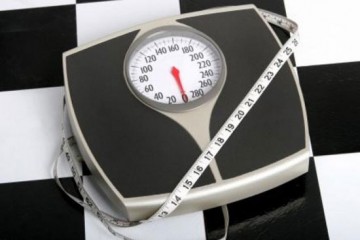Osteopenia natural treatment, prevent low bone density with diet and exercise
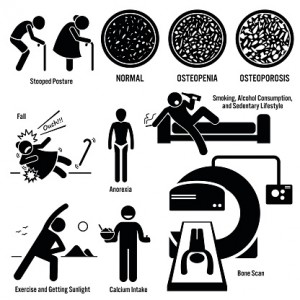 Many people are familiar with the term osteoporosis, but fewer have heard the term osteopenia, which means lower bone density than normal. If you have osteopenia, your bone density may be lower than normal peak level, but it isn’t low enough to be considered osteoporosis.
Many people are familiar with the term osteoporosis, but fewer have heard the term osteopenia, which means lower bone density than normal. If you have osteopenia, your bone density may be lower than normal peak level, but it isn’t low enough to be considered osteoporosis.
Bone density is simply the measurement of how dense and strong bones are. Lower bone density puts you at a higher risk of eventually getting osteoporosis.
Low bone density is often associated with the elderly. As we grow older, bones become thinner due to the fact that the body reabsorbs bone cells faster than new bone is made. Other diseases or treatments can also cause osteopenia.
Research shows that some of the following factors can contribute to osteopenia:
- Eating disorders or metabolism problems
- Chemotherapy or other medications
- Family history of osteoporosis
- Being thin
- Being sedentary
- Smoking
- Regular cola drinking
- Excessive alcohol consumption
Women are at a higher risk of developing osteopenia because they have a lower peak bone density and because bone loss speeds up around the time of menopause.
Osteopenia treatment options
Not everyone with osteopenia will be prescribed conventional treatment, such as prescription drugs. Osteopenia treatment guidelines are based on the risk of bone fracture for each individual patient.
Some of the factors the doctors will look at when considering treatment include, whether or not a parent of the patient has fractured any bones, whether or not the patient has had any treatment with corticosteroids such as prednisone in the past, and whether or not the person has other medical conditions, like rheumatoid arthritis. The doctor will also ask about smoking and drinking habits. All of this information is used to calculate the patient’s risk of bone fracture within the next 10 years. Based on the calculation, the doctor will prescribe either medications or lifestyle adjustments.
Lifestyle adjustments are a vital part of treatment for osteopenia. A big part of these lifestyle changes includes osteopenia exercises, such as walking and lifting light weights. It also involves making sure all the essential nutrients are being consumed, especially adequate amounts of calcium and vitamin D.
Prevent osteopenia with natural treatment
 While severe osteopenia treatment may require strong prescription medications, many people with low bone density are able to turn to natural treatment. For example, the osteopenia diet emphasizes the importance of calcium, so consuming milk, diary products, and green vegetables is a good idea. Many people with osteopenia take calcium supplements.
While severe osteopenia treatment may require strong prescription medications, many people with low bone density are able to turn to natural treatment. For example, the osteopenia diet emphasizes the importance of calcium, so consuming milk, diary products, and green vegetables is a good idea. Many people with osteopenia take calcium supplements.
As outlined earlier, vitamin D is important. Your body requires it to absorb calcium properly. You can get vitamin D by spending 10-15 minutes outside in the sun each day, or taking a vitamin D supplement.
Some nutritional experts suggest that a number of supplements have potential when it comes to strengthening bones. Some are listed below, but should be discussed with your doctor before you include them in your routine.
- Folic acid
- Vitamin B6, vitamin B12
- Manganese
- Zinc
- Omega-3 fatty acids found in fish
Although research is ongoing, some nutritionists also suspect that herbs might be helpful including, horsetail, red clover, and black cohosh.
While you are looking at food, vitamins, minerals, and herbs, consider adjustments to caffeine, alcohol, and sodas, since excessive amounts are not good for our bones.
If you have been diagnosed with osteopenia, you should take steps to prevent falling as well. You can avoid walking when it is icy, make sure your home is well lit, install railings near the bathtub, and remember to wear shoes that fit properly and give you good support.
Treat osteopenia through proper diet and nutrition
The osteopenia diet has proven successful time and time again for those who suffer from this bone density condition. Even if you have not been diagnosed with lower bone density, you need a certain level of calcium. People aged 50 and older should be getting at least 1,200 mg of calcium each day. If you are 19 to 49, a daily dose of 1000 mg is recommended. It is important to note that too much calcium can cause health problems too, so if you plan on supplementing you should be supervised by a doctor.
It is widely believed that getting enough vitamin D can prevent osteopenia and osteoporosis. Generally, between 400 and 800 IU of vitamin D daily is recommended, but some physicians may suggest a higher dose to certain patients. Foods such as breads and cereals, as well as fish are fortified with vitamin D. Just like calcium, vitamin D can be harmful in high doses so make sure you follow doctor’s suggestions.
In terms of alcohol consumption, moderate consumption is okay. However, consuming two or more drinks per day has shown to impact the formation of bone and make it difficult for bones to metabolize calcium.
There are certain foods that make calcium absorption difficult as well. These foods include beans, wheat bran, spinach, rhubarb, and beet greens. This does not mean you can’t eat these, it just means you have to make sure enough calcium in consumed outside of these foods to make up for it.
Osteopenia treatment and management with exercise
 Osteopenia exercises are not only for the treatment of the condition, but are to help prevent the condition from progressing to osteoporosis. Your doctor will determine if it is safe for you to take on an exercise routine.
Osteopenia exercises are not only for the treatment of the condition, but are to help prevent the condition from progressing to osteoporosis. Your doctor will determine if it is safe for you to take on an exercise routine.
Here are some of the exercise regiments he or she may suggest:
- Weight-bearing exercise: these include exercise bands or simply walking and hiking.
- High-intensity exercise: this could be aerobics class, swimming, dancing or cycling.
- Balancing: posture and balance are important exercises to prevent falls. Pilates, yoga, tai chi, and stability ball workouts are examples.
If you have been diagnosed with osteopenia and you are taking part in a regular exercise routine, you must make sure you do not overdo it. Too much exercise or overly aggressive exercise can be damaging. Some people with osteopenia have a fitness coach who is fully aware of their medical condition and can guide them during their exercise programs so they do not injure themselves.
It sounds odd, but we do take our bones for granted. When you think about it, they serve an amazing function that we just trust will always protect us. Bones provide support and structure, and without them the human body would basically be nothing but a shapeless pile of tissue. Bones protect our vital organs and central nervous system, they form our backbone (vertebrae) and our ribs that house our precious heart and lungs. Whether we currently have osteopenia or not, we should be paying close attention to our bone health.
Brain neurons controlling hunger and appetite also regulate bone mass
A new study finds that the brain neurons which control hunger and appetite also regulate bone mass. A senior author Tamas L. Horvath said, “We have found that the level of your hunger could determine your bone structure. The less hungry you are, the lower your bone density, and surprisingly, the effects of these neurons on bone mass are independent of the effect of the hormone leptin on these same cells.” Continue reading…
-
How To Get A Killer Workout Boot Camp Style
If you are determined to lose weight and to do it naturally, healthy a
-
How To Stay Positive During A Weight Loss Plateau
Have you hit a plateau in your weight loss which is when your scale s
-
Shed Your Belly Bulge With These 3 Phenomenal Power Foods!
Losing weight doesn̵
-
Health Diet - Controlling Belly Fat With Whole Grains
We all dream of a super flat stomach and hanker after the perfect s
-
Weight Loss Plans - Quick Weight Loss Tips For Men
It is often believed that men are always trying to gain muscle and mas
-
The Common Questions Every Diet Professional Is Asked (And Their Answers!)
When you’ve Google
- DON'T MISS
- Why We Gain Weight And How To Lose It
- Weight Loss Tips: 25 Weight Loss Tips For Healthy Weight Loss
- Do These 7 Things In The Morning To Promote Weight Loss All Day
- Receive More information on Methods for you to Safely Trim Down
- How Do You Lose Weight After All The Diet Plans Have Failed?
- The 3 Advantages Of Cabbage Soup Diet
- Why Whey Protein?
- Celopin Diet Pill: Does Celopin or any Diet Pill, Help You Lose Weight Fast?
- Are Raspberry Ketones Effective and Just What Are They?
- The Quickest Path to Weight Loss

